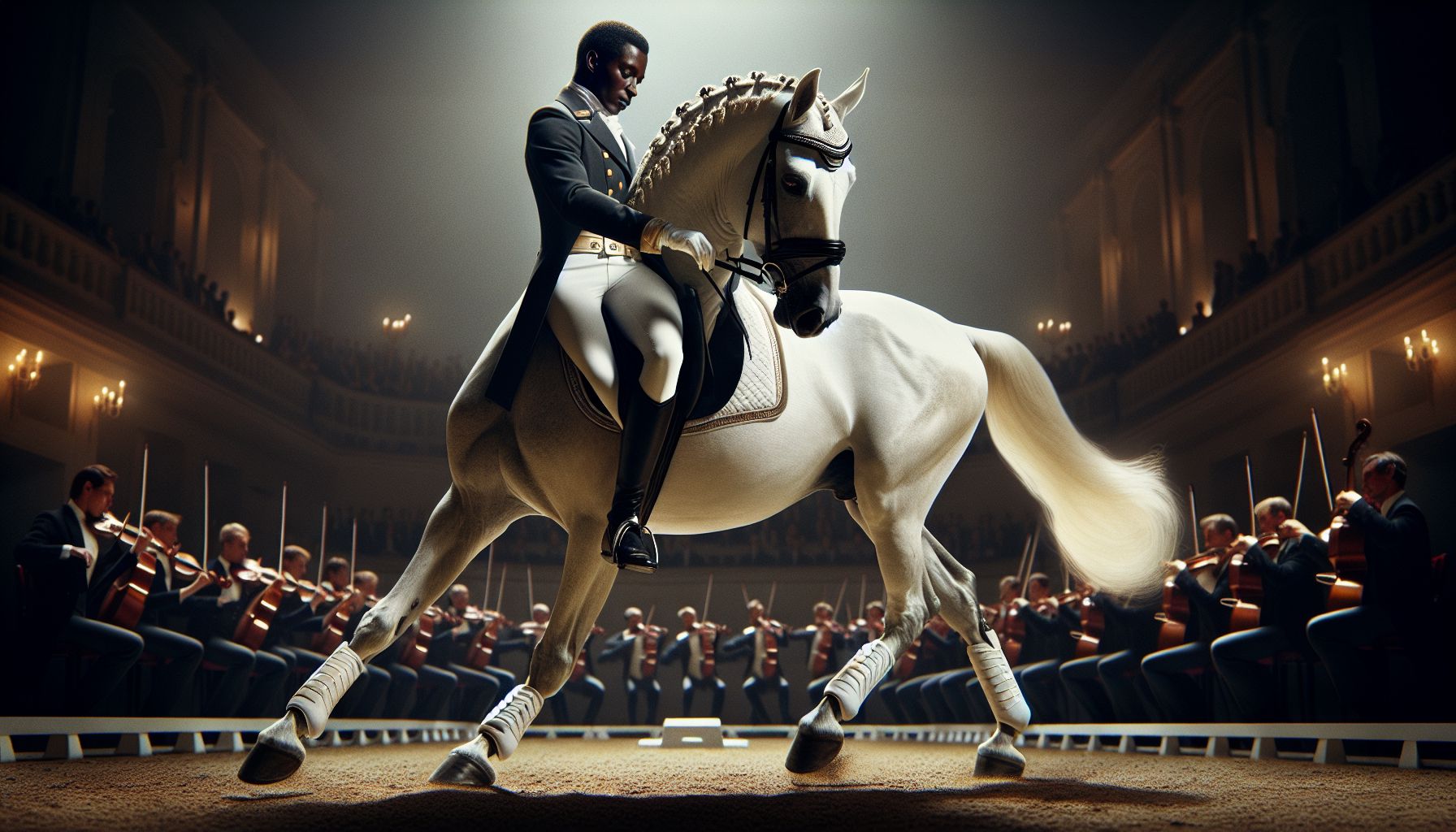From the graceful movements to the elegant attire, dressage is an equestrian sport that captures the hearts of horse enthusiasts around the world. Often regarded as ballet on horseback, it combines artistry, finesse, and precision in a captivating display. Whether you’re a seasoned equestrian or simply someone curious about this elegant discipline, join us as we delve into the world of dressage.
The Basics: What is Dressage?
Dressage, pronounced as druh-sahzh, is a French term that translates to “training” in English. It is an equestrian sport that showcases the harmony between horse and rider through a series of carefully choreographed movements. In essence, dressage is the epitome of horsemanship, where communication and understanding between the two participants take center stage.
A History Steeped in Tradition
The roots of dressage can be traced back to ancient Greece, where military training for warhorses involved complex maneuvers. Over time, these exercises developed into a form of equestrian ballet, often performed for entertainment and demonstrations. Dressage as we know it today began to take shape during the Renaissance period in Europe, where it gained prominence among the nobility and was considered an essential skill for riders.
The Dressage Pyramid: Foundation of Excellence
At the core of dressage lies the Dressage Pyramid, a progressive training system that sets the foundation for exceptional horsemanship. The pyramid consists of six elements, each building upon the other to create a balanced, harmonious partnership between horse and rider:
- Rhythm: The fundamental beat and tempo that underpin all movements.
- Relaxation: The horse’s ability to remain supple and calm, allowing for fluid transitions.
- Contact: A soft and elastic connection between the rider’s hand and the horse’s mouth, facilitating communication.
- Impulsion: The energy and forward momentum that drive the horse’s movement.
- Straightness: The alignment of the horse’s body, allowing for balanced and balanced footwork.
- Collection: The pinnacle of the pyramid, where the horse carries more weight on its hindquarters and performs intricate, advanced movements with grace.
By carefully developing each element of the pyramid, riders and horses achieve a level of skill and artistry that reflects years of dedication and training.
The Dance Begins: Dressage Movements
Dressage movements can be compared to a choreographed dance, with the horse and rider gracefully executing a series of figures and transitions. While the range of movements is extensive, some of the most recognizable include:
- Piaffe: A trot performed in place, showcasing the horse’s ability to collect and elevate its movements.
- Passage: A slow, suspended trot, where the horse appears to float above the ground.
- Extended Trot: An impressive display of athleticism, where the horse covers massive ground with elevated and extended strides.
- Half-Pass: A diagonal movement where the horse moves forward and sideways simultaneously, maintaining grace and balance.
- Flying Changes: Mid-air transitions between the canter leads, a hallmark of advanced dressage.
Each movement requires precision, synchronization, and subtlety, with the aim of demonstrating the horse’s strength, flexibility, and willingness to perform.
The Art of Dressage Attire
Beyond the captivating movements, dressage also embraces a unique aesthetic, reflective of its rich history and traditions. Riders appear in elegant formal attire, often dressed in black or navy tailcoats, white breeches, and tall black boots. A top hat or helmet is adorned, accompanied by white gloves and sometimes a stock tie or a white tie. This traditional attire, while elegant and sophisticated, also serves a functional purpose, allowing the rider to display poise and discipline throughout the performance.
Dressage Competitions: Showcasing Mastery
Dressage competitions are a true spectacle, where horse and rider showcase their mastery of the discipline in front of a judge. Organized in levels from introductory to the highest level of Grand Prix, each competition follows a predetermined test or pattern. These tests consist of a combination of movements, and riders must flawlessly execute them, combining technical skill with an artistic flair.
Judges closely evaluate the rider’s position, the horse’s responsiveness to cues, and the quality of movement. Marks are awarded for each movement, and at the close of the competition, the scores are tallied to determine the winners. The tiniest nuances and errors can make a significant impact, making dressage both exhilarating and nerve-wracking for the participants.
Embracing Dressage: More Than Just a Sport
While dressage is undoubtedly a competitive sport, it offers much more than just a chance to win ribbons or trophies. The essence of dressage lies in the partnership between horse and rider, built on trust, respect, and a shared language. It teaches patience, discipline, and empathy, fostering a deep connection between two beings from different species.
Dressage transcends the boundaries of competition and becomes a magnificent art form, where the harmony between horse and rider captivates audiences worldwide. It offers an escape from the complexities of everyday life, inviting us to witness moments of beauty, grace, and intimate rapport.
Conclusion
Dressage is more than just a sport; it is an eloquent dance between horse and rider. Rooted in tradition, steeped in history, and guided by the Dressage Pyramid, this equestrian discipline showcases the pinnacle of harmony, skill, and communication. So, the next time you witness a dressage performance, take a moment to appreciate the intricate connection between these magnificent creatures and their riders—a connection that transcends sport and becomes a work of art.
